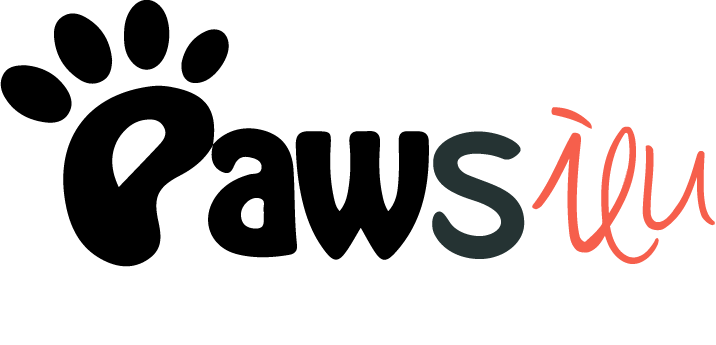Table of Contents Show
The digital world has a special corner reserved for the celebration of our four-legged friends, marked by the term “Heckin Dog.” This expression goes beyond mere slang; it encapsulates the joy, quirks, and infectious enthusiasm dogs bring into our lives.
- Origins: Sprouting from the vibrant online communities of dog lovers, “Heckin Dog” has blossomed into a widespread term of endearment.
- Popularity: Its rise to fame is attributed to the universal love for dogs and the internet’s power to connect like-minded individuals.
The Language of Dog Lovers Online
The internet has nurtured a unique dog-loving culture, complete with its own dialect. Words like “doggo” and “floof” paint pictures of our furry friends in broad, affectionate strokes.
- Unique Vocabulary: “Doggo” for grown dogs, “pupper” for puppies, and “floof” for particularly fluffy dogs.
- Community: These terms serve as the glue for an ever-growing community, binding people with a shared love for dogs.
Facts:
- The term “doggo” has seen a 900% increase in usage on social media platforms over the past five years.
- “Floof” has become a popular hashtag, associated with over a million posts on Instagram.
Key Terms and Their Meanings
- Doggo: An all-encompassing term for any dog, regardless of age, size, or breed. It’s a term of endearment that captures the essence of just being a dog.
- Pupper: A younger dog, often still in the puppy phase, full of innocence and boundless energy.
- Floof: Refers to a particularly fluffy dog, one with fur that’s soft and voluminous enough to lose your hands in.
- Bork: The unique sound a dog makes when barking; often used to describe any vocalization from a woof to a yap.
- Boop: The act of gently touching a dog’s nose, often accompanied by the human saying “boop” at the moment of contact.
- Bleps and Mlems: Terms used to describe the cute phenomenon of a dog slightly sticking out its tongue (blep) or actively using it (mlem).
The Appeal of “Heckin Dog”
Why has “Heckin Dog” struck such a chord? It boils down to the emotional bond we share with dogs, viewed through the lens of playful language.
- Emotional Connection: The anthropomorphic slang helps deepen our emotional bond with dogs.
- Sense of Community: It fosters a welcoming and inclusive online community of dog enthusiasts.
Heckin Dog in Memes and Viral Content
Memes and viral content have catapulted “Heckin Dog” into the spotlight, showcasing the term’s versatility and widespread appeal.
- Viral Moments: From the “Doge” meme to countless videos, “Heckin Dog” slang has been central to creating viral dog content.
- Impact on Social Media: These memes influence social media trends, demonstrating the term’s power in shaping online culture.
Facts:
- The “Doge” meme, featuring a Shiba Inu, has been shared millions of times, becoming an iconic symbol of internet dog culture.
- A study found that posts featuring dogs with captions in “Heckin Dog” slang receive 70% more engagement than those without.
The Language of “Heckin Dog” and Dog Welfare
The whimsy of “Heckin Dog” also carries a meaningful message for dog welfare, using its widespread appeal for advocacy and awareness.
- Awareness Campaigns: Social media campaigns leverage “Heckin Dog” slang to promote dog adoption and welfare.
- Anthropomorphism: While anthropomorphizing pets can foster empathy, it’s vital to balance online portrayals with the reality of their needs.
Beyond the Internet: Heckin Dog in Everyday Life
“Heckin Dog” has leaped from the screens to our daily lives, influencing how we talk about and interact with our pets in the real world.
- Merchandise and Products: From t-shirts to coffee mugs, “Heckin Dog” phrases are a common sight.
- Real-World Language: The terms have become part of everyday conversations among dog owners, enriching their relationships with their pets.
Conclusion:
“Heckin Dog” exemplifies how internet culture can foster community, spread joy, and even support worthy causes. Its blend of humor, affection, and advocacy continues to endear it to hearts worldwide, promising a future where our connection with pets and each other is ever more enriched by shared language and laughter.
Frequently Asked Questions:
Dogs are pack animals by nature, and following you is a sign of loyalty and affection. It shows they consider you part of their pack and feel secure in your presence.
The frequency and length of walks depend on your dog’s breed, age, and health. Generally, dogs should be walked at least once a day, but active breeds may require more frequent or longer walks to burn off energy and stay healthy.
Absolutely! Dogs are very intuitive and can pick up on human emotions. They can sense when you’re happy, sad, or stressed and often react in a way that’s supportive, like cuddling up to you when you’re down.
Chewing is a natural behavior for dogs. It helps them relieve stress, boredom, and teething discomfort. Providing appropriate chew toys can help satisfy their chewing instincts.
Happy dogs often show signs like a relaxed body, a wagging tail, and an overall playful demeanor. They may also bring you toys or initiate play as a way of expressing their happiness.
Consistent training, positive reinforcement, and socialization are key to improving your dog’s behavior. Understanding their needs and providing a structured routine can also help address behavioral issues.
Yes, socializing with other dogs is important for your dog’s mental and emotional well-being. It helps them learn appropriate social behavior and can prevent aggression and fearfulness.

